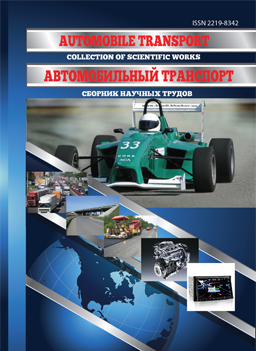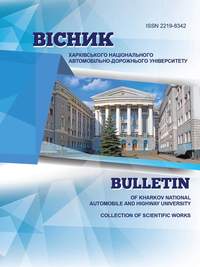Solar car: modern technologies and development prospects
DOI:
https://doi.org/10.30977/VEIT.2018.14.0.28Abstract
Problem. At the present time, the need for energy sources is growing. The use of petroleum products as energy sources leads to environmental degradation. It is necessary to look for alternatives to heat engines, which are the main sources of air pollution and exhaustion of natural resources. One of the ways to solve this problem is to use solar energy. Solar cars harness energy from the sun, converting it into electricity. Goal. Analyzing the existing types of cars with alternative power sources. Explore solar cars. Examine their device. To determine all the advantages and disadvantages of this invention. We give a forecast on the prospects for the development and use of the cars on solar energy. Results. The device of the heliomobil is investigated; the principle of its work is studied and generalized. The advantages and the indicated disadvantages of these vehicles are given. We analyze all the positive and negative aspects of this invention. There is the problem of how to get around at night or on rainy days when the sun is nowhere to be seen. Most viable solar car projects rely on additional power sources to ensure that the car gets going any time you need it to. Originality. The main indicators that influence the development of production and use of solar cars in the future are shown in this article. It is reasonable to use solar vehicles in the present and especially in the future. Practical value. It can already be argued that for heliomobiles there is an ecologically clean future of our planet. The use of solar energy is a step towards improving the ecology of our planet. Solar cars will be crucial to reducing transport’s impact on climate change and should be introduced widely as soon as possible.
Keywords:
heliomobile; electric car; photocells; photoelectric effect; solar battery.
References
Nikonov O. YA. Robotizirovannye avtomobili: sovremennye tekhnologii i perspektivy razvitiya [Robotic cars: modern technologies and development prospects]. Avtomobil' i Elektronika. Sovremennye tekhnologii. (Har'kov, 2013. № 5. С. 38 – 42) [in Russian].
Knez M., Sternad М. Solar energised transport solution and customer preferences and opin-ions about alternative fuel vehicles – the case of Slovenia. Transport Problems. 2015. Vol. 10, No. 3. – pp. 17 – 28.
Arno Smets, Klaus Jäger, Olindo Isabella, et al. Solar Energy: The Physics and Engineering of Photovoltaic Conversion, Technologies and Systems. Cambridge, 2016. 462 p.
Geliomobili – vydumannyj mif ili real'nost'? [Geliomobil – fictional myth or reality?] Drug ehlektrotranstporta – EVBud.com/ – Retrived from: http://ru.evbud.com/news/464/ (ac-cessed: 08.12.2018) [in Russian].
Geliomobil' eVe b'yot rekord [Geliomobil eVe hits record] Ekstrim, novosti ehkstremal'nogo sporta, i ehkstremal'nye sobytiya v mire: foto, video, stat'i. Retrived from: http://extrim-all.ru/extrimal/geliomobil-eve-byot-rekord.html (accessed: 08.12.2018) [in Rus-sian].
Lovcy Solnca: Sila sveta [Sun Hunters: Light Power]. Populyarnaya Mekhanika – novosti nauki i tekhniki: novye tekhnologii, nauka, oruzhie, aviaciya, kosmos, avtomobili. Retrived from: https://www.popmech.ru/technologies/5854-lovtsy-solntsa-sila-sveta (accessed: 08.12.2018) [in Russian].
Avtomobil' na solnechnyh batareyah: princip dejstviya, preimushchestva i nedostatki [Solar-powered car: principle of operation, ad-vantages and disadvantages]. Ekoenergia.ru. Retrived from: http://ekoenergia.ru/ecotransport/avtomobil-na-solnechnyih-batareyah.html (accessed: 08.12.2018) [in Russian].
Rhodes K., Kok D., Sohoni P., et al. Estimation of the Effects of Auxiliary Electrical Loads on Hybrid Electric Vehicle Fuel Economy. SAE Technical Paper 2017-01-1155, 2017.
The History of Solar Car Racing. Solar Car Rac-ing. Retrived from: http://www.solarcarchallenge.org/challenge/history.shtml (accessed: 08.12.2018).
ПРИСТАТЕЙНА БІБЛІОГРАФІЯ ДСТУ
Никонов О. Я., Полосухина Т. О. Роботизированные автомобили: современные технологии и перспективы развития. Автомобиль и Электроника. Современные технологии. Харьков, 2013. № 5. С. 38 – 42.
Knez M., Sternad M. Solar energised transport solution and customer preferences and opinions about alternative fuel vehicles – the case of Slovenia. Transport Problems. 2015. Vol. 10, No. 3. pp. 17 – 28.
Arno Smets, Klaus Jäger, Olindo Isabella, et al. Solar Energy: The Physics and Engineering of Photovoltaic Conversion, Technologies and Systems. Cambridge, 2016. 462 p.
Гелиомобили – выдуманный миф или реальность? Друг электротранстпорта – EVBud.com/. URL: http://ru.evbud.com/news/464/ (дата обращения 08.12.2018).
Гелиомобиль eVe бьёт рекорд. Экстрим, новости экстремального спорта, и экстремальные события в мире: фото, видео, статьи. URL: http://extrim-all.ru/extrimal/geliomobil-eve-byot-rekord.html (дата обращения 08.12.2018).
Ловцы Солнца: Сила света. Популярная Механика – новости науки и техники: новые технологии, наука, оружие, авиация, космос, автомобили. URL: https://www.popmech.ru/technologies/5854-lovtsy-solntsa-sila-sveta/ (дата обращения 08.12.2018).
Автомобиль на солнечных батареях: принцип действия, преимущества и недостатки. Ekoenergia.ru – Всё об альтернативной энергетике. URL: http://ekoenergia.ru/ecotransport/avtomobil-na-solnechnyih-batareyah.html (дата обращения 15.05.2018).
Rhodes K., Kok D., Sohoni P., et al. Estimation of the Effects of Auxiliary Electrical Loads on Hybrid Electric Vehicle Fuel Economy. SAE Technical Paper 2017-01-1155, 2017.
The History of Solar Car Racing. Solar Car Rac-ing. URL: http://www.solarcarchallenge.org/challenge/history.shtml (дата обращения 08.12.2018).
Downloads
Published
How to Cite
Issue
Section
License
Copyright (c) 2021 Олег Яковлевич Никонов, Марина Владимировна Костикова, Ирина Валентиновна Скрипина, Эмир Али Ришадович Усмонов

This work is licensed under a Creative Commons Attribution 4.0 International License.
Автори, які публікуються у цьому журналі, погоджуються з наступними умовами:
1. Автори залишають за собою право на авторство своєї роботи та передають журналу право першої публікації цієї роботи на умовах ліцензії Creative Commons Attribution License, котра дозволяє іншим особам вільно розповсюджувати опубліковану роботу з обов'язковим посиланням на авторів оригінальної роботи та першу публікацію роботи у цьому журналі.
2. Автори мають право укладати самостійні додаткові угоди щодо неексклюзивного розповсюдження роботи у тому вигляді, в якому вона була опублікована цим журналом (наприклад, розміщувати роботу в електронному сховищі установи або публікувати у складі монографії), за умови збереження посилання на першу публікацію роботи у цьому журналі.
3. Політика журналу дозволяє і заохочує розміщення авторами в мережі Інтернет (наприклад, у сховищах установ або на особистих веб-сайтах) рукопису роботи, як до подання цього рукопису до редакції, так і під час його редакційного опрацювання, оскільки це сприяє виникненню продуктивної наукової дискусії та позитивно позначається на оперативності та динаміці цитування опублікованої роботи.








